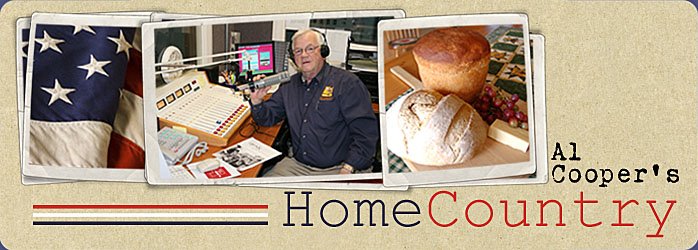
We have the Dutch to thank for the modern word landscape, one of those “borrowed” pieces of language which has taken on an enlarged meaning over the years. Holland, home to some of the greatest artists of the past, re- invented the word landshap to describe a painting style of the early 18th century which saw artists moving outdoors with their brushes and oils to record the beauties of field, stream and nature. The word literally meant “shape of the land”, so when it moved into English in the late 1700s, it began to find usage outside the realm of portraiture. Present day demographers in fact think of “landscape” in terms not just of the natural outdoor world, but of the land and its content as a dynamic and changing backdrop to people’s lives; including features made by man himself.
As I have traveled this land I love, with notebook, sketch pad and camera over a lifetime, I have sought to capture all that the word conveys. In this and some future columns, I will share some of what I have seen, in both images and words.
For thousands of years, agriculture changed little, production being limited to what one man with basic hand tools could plant, raise and harvest. A hard-working farmer with a hand-sharpened scythe for instance, might hope to harvest about one quarter of an acre of wheat per day, about what he could have planted while laboring behind a horse or an ox in a similar time span. Then, in the 1830s, an American “revolution” began. A young Vermonter named John Deere invented a self-cleaning, side-board iron-and-steel plow destined to change farming forever, at the same time a Virginian of Irish descent, Cyrus McCormick, patented a device known as a mechanical reaper. Suddenly, farm output quadrupled, freeing up entire segments of population to move into industry, literally changing American agricultural and the cultural landscape. From horse-drawn implements made from interchangeable parts, it was a short leap into a future powered by steam, then gasoline engines, all in time to open up the vastness of western prairie lands. The “shadows” of those marvelous and inventive implements still linger on the landscape, as graceful artifacts from our agricultural past.

Old Sturbridge Village in Massachusetts – a true living-history museum – seeks to recreate everyday life in a typical northeastern village of 1800. If you are lucky, you might get to see high-hatted farmers using a yoke of oxen to open furrows in the same way it had been done for centuries of time.

Spring flowers and meadow grass are backdrop for a horse-drawn cultivator which seems to languish in the same spot where it probably met its demise years ago, replaced perhaps by a tractor-motivated machine of greater efficiency. Wherever the artist or photographer may wander, such “stories” are waiting to be discovered.

With iron locomotives and ribbons of steel spanning the continent, it was inevitable that the huffing and belching steam engine would find its way onto the growing acres of wheat lands in the mid-west. The Wood Bros. of Iowa produced steam-powered threshing machines such as this one, between 1910 and 1919. Far too expensive for an individual farmer to acquire, “threshing rings” made up of multiple families would be organized, with one member designated to be sent away to a steam school, so that an entire farming neighborhood could benefit from its bountiful potential.

Offspring of Cyrus McCormick’s revolutionary invention, and renovated with rubber-tired wheels and a tractor towing hitch, this harvester was originally pulled by a gang of horses, and was capable of harvesting 16 acres per day or more, literally changing history.
Caption for title photo above:
Like some giant mechanical dinosaur from out of a sci-fi drama, this still-colorful piece of farming history is one of hundreds of such Utah landmarks.




































